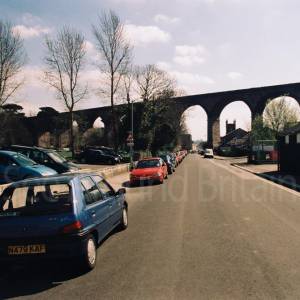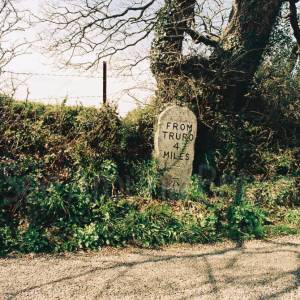Truro, Cornwall
Details
Accessibility
Truro to benefit from new Changing Places facility
Truro City Council is pleased to announce that a new Changing Places facility will be installed at the public toilets on Green Street.
The current provisions are due for refurbishment, and as part of this, the new facility will be installed.
A Changing Places toilet is a larger and more accessible space to meet a large number of additional needs of disabled people and their carers. The toilets are also fitted with specialised equipment for support. More information about the facilities can be found at www.changing-places.org.
Earlier this month, Cornwall Council announced that nearly £236,000 had been awarded by the Government to help fund the installation of six Changing Places facilities across the county.
The Green Street project is already in its development stage and has now benefitted from the government grant. It is expected that the facility will be open in Spring 2023.
The Mayor of Truro, Cllr Steven Webb, commented:
The Changing Places toilets give you peace of mind whether you are visiting or are local to Truro. It means if you are severely disabled you don’t have to go home if you need to be attended to by your carers for something routine or when things inevitably go wrong.
As a severely disabled Mayor of Truro, it’s nice to know we have received funding to have such a facility in the centre of our city.
Before the pandemic, Truro City Council staff met with users of Changing Places toilets to discuss their thoughts on the installation, including what provisions they would like to see.
During the development, there will be public consultations to give people the opportunity to discuss the exterior design.
We will release more details of these in due course.
Elsewhere, Truro City Council has been working on the installation of another Changing Places toilet at Boscawen Park. This was part of a separate project included in the redevelopment of the tennis pavilion.
Work began at the beginning of the year and should be complete by Autumn 2022.
For further information and updates, please see our Facebook page and visit our website: @trurocitycouncil; www.truro.gov.uk. "
Brief description
"History of Truro
Truro (Truru – Three Rivers) is located at the highest fording point of the Fal Estuary. The Kenwyn (Dowr Ithy), Allen and Glasteinan (Tinney) merge into Truro River to subsequently become the River Fal below Malpas.
In legend Tristan and Iseult hid from jealous King Mark in Moresk Forest and took the Malpas Ferry to escape from him. Two of Truro’s greatest sons were Richard Lander, an explorer, and Henry Martyn, a missionary; both seafarers. Three great Cornish roads converged at High Cross (by the Cathedral) – Pydar Street, Helston Road and the North road from Grampound. There is much evidence that reflects very early settlement and industry in Truro.
Truro’s Charter was granted by Reginald, Earl of Cornwall, in about 1175. It is the oldest known document held by a Cornish borough and addresses ‘all men, Cornish and English’.
The City arms came from the badge of the Gild of St Nicholas; the patron of seamen and seafaring merchants – hence a ship and three fish. Echoes of the Gild survive in St Nicholas Street. The medieval Priory was a centre of learning which helped record the Cornish language.
Between 1135 and 1154 an ‘adulterine’ castle was erected during the civil war between King Stephen and Queen Matilda. It later became the Livestock Market and is a key element of Truro’s economic life to this day. It is now the site of the Crown Court (Evans & Shalev 1990s).
In the 12th century Truro became a market town and in the 13th century Truro became a Stannary Town administering Cornish law and exacting ducal levies from mined metal. By the early 14th century Truro was, as it is today, a trading, manufacturing and administrative centre.
Henry le Bailly and Robert Maynard were selected by Edward 1st to represent Truro at the ‘Model Parliament’ of 1295. Truro retained two MPs until the Reform Act of 1867.
Despite plagues, 19th century migration, great wealth (Mansion House) living side by side with great poverty (Corn Riots), the collapse of Cornish banking and the subsequent temporary cessation of mining, Truro quietly prospered. It formed an early Turnpike Trust so that some of its most famous characters, Dr John Wolcot, Samuel Foote, Davies Gilbert and Sir Hussey Vyvyan, developed reputations in London. Very early civic engineering projects addressed cholera by sealing dirty wells and building a Waterworks; pioneering public health. The railway first appeared in 1834.
At the end of the 19th century Truro was selected to host the new cathedral and became the heart of the new Cornish Diocese. It joined the elegant civic centre of Truro City Hall, the newly formed Royal Institution of Cornwall (Royal Cornwall Museum), Lemon Street mansion houses and the architectural flourish of Sylvanus Trevail and Philip Sambell, to be followed in the 1960s by a post-war brutalist flourish of buildings and civil engineering making Truro one of Cornwall’s most prosperous, elegant and influential towns. In the 1800s Truro secured the title ‘City’ and in 1996 the Crown Court moved from Bodmin to join the new Treliske Hospital as the focus of NHS in Cornwall."
Address
Truro City Council, Municipal Buildings, Boscawen Street, Truro, TR1 2NE
Phone
01872 274766
Website
https://en.wikipedia.org/wiki/Truro
Directions
For a map around Truro see: https://www.visittruro.org.uk/map
Opening Times
Always check with the venue directly for up-to-date information including opening times and admission charges as they may be subject to change
Transport
Amenities
"Truro's amenities include the Truro Cathedral, a leisure center with a gym and pool, various parks and gardens like Boscawen Park, the Truro Farmers Market, banks, shops, and restaurants, as well as port facilities with moorings and boatyard services. Public transport is available, including Truro Station for trains and buses, and the city offers a range of holiday accommodation and shopping options."
Travel Information
For further travel information please see: www.traveline.info
Or call Traveline on 0871 200 22 33
(Calls cost 12p per minute plus your phone company's access charge)











